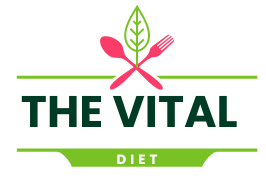
Embrace the journey of gluten-free living with our week-long meal plan designed to provide you with nutritious and delicious meals. This guide is specifically curated for those who need to eliminate gluten due to health conditions like celiac disease, gluten sensitivity, or other dietary restrictions.
Understanding the Importance of Nutrition in a Gluten-Free Diet
A gluten-free diet necessitates the exclusion of foods containing gluten, a protein found in grains like wheat, rye, barley, and triticale. It becomes vital for individuals with celiac disease or gluten intolerance to adopt this dietary pattern1. However, ensuring adequate nutrition while eliminating a significant food group can pose a challenge. This is where a well-planned gluten-free meal plan comes in handy.
Gluten-free diets may offer numerous health benefits, including relieving gastrointestinal symptoms, reducing chronic inflammation in individuals with celiac disease, and potentially improving certain other health conditions2. However, a gluten-free lifestyle also risks nutrient deficiencies, including fiber, iron, calcium, zinc, folate, vitamin B12, and vitamin D3. Therefore, it becomes crucial to plan your meals carefully to avoid nutritional gaps.
A Sample 7-Day Gluten-Free Menu
Our week-long meal plan is designed for an average person who requires approximately 2,000 calories per day. However, individual nutritional needs may differ, so it’s best to discuss your dietary requirements with your healthcare provider or a registered dietitian. Each day includes three balanced meals and three optional snacks, providing you with a variety of nutrients from fruits, vegetables, gluten-free whole grains, and legumes.
The meal plan also includes a daily calorie count for each meal and snack, along with macros like protein, carbohydrates, and fat. This guide will help you stay on track with your nutritional goals, whether you’re trying to lose weight or just maintain a healthy lifestyle.Copy code
Note: The beverages are not included in this meal plan. Fluid needs vary based on age, sex, activity level, and medical history. Generally, it's recommended to drink approximately 9 cups of water per day for women and 13 cups of water per day for men[^4^].
Day 1
Breakfast
- 1 cup 2% plain Greek yogurt
- 1/4 cup gluten-free granola
- 1/2 cup blueberries
Snack
- 1 medium banana
- 1 tablespoon peanut butter
Lunch
- 1 cup lentil and vegetable soup
- 5 ounces baked chicken
Copy code
Reminder: Always double-check the ingredients list of packaged or prepared foods like granola to ensure they are gluten-free.
Snack
- 1/2 cup baby carrots
- 1/4 cup hummus
Dinner
- 4 ounces cooked shrimp
- 1 cup cooked brown rice
- 1/2 cup broccoli sautéed in 1 tablespoon olive oil
- 2 tablespoons peanut sauce
Snack
- 2 cups plain popcorn
- 1 ounce 70% dark chocolate
Day 2
Breakfast
- 1/2 cup cooked oatmeal in water
- 1 tablespoon hemp seeds
- 1 tablespoon peanut butter
- 1 medium sliced banana
Snack
- 15 almonds
- 15 cherries
Lunch
- Greek Salad (2 cups romaine lettuce, 1/2 cup chopped tomato, 1/2 cup chopped cucumber, 1/4 cup black olives, 1/4 cup feta cheese, 1/2 cup chickpeas, and 2 tablespoons balsamic vinaigrette)
Snack
- One cucumber, sliced
- 3 tablespoons tzatziki
Dinner
- 1 1/2 cups lentil pasta
- 1/2 cup tomato sauce
- 1/2 cup broccoli roasted with 1 tablespoon olive oil
Snack
- Three Medjool dates
- 2 tablespoons almond butter
Continue this pattern for the remaining days, ensuring you are including a variety of gluten-free foods to meet your nutritional needs.
Gluten-free Meal Planning Tips
Creating a gluten-free meal plan doesn’t have to be complicated. Here are some tips to make it easier:
- Start your day with a balanced breakfast. Include protein, healthy fats, and fiber in your breakfast to keep you full and satisfied.
- Plan ahead and meal prep. Use your free time to plan your meals for the week, grocery shop, and prep meals in advance. This will save time during busy weeks and help you stay on track.
- Remember the food groups. Aim to include a protein, carbohydrate, fat, and fruit or vegetable in each meal. This will help you get all the nutrients you need and keep you satisfied.
- Snacking is optional. If you are not hungry for snacks between meals, don’t force yourself to eat them. However, gluten-free snacks, especially those high in fiber and protein, can help stabilize your blood sugar levels and prevent overeating at meals.
- Keep a list of gluten-free food resources. Having a list of grocery stores that stock a good range of gluten-free options and a list of gluten-free food products can be handy.
A Final Word
Adopting a gluten-free diet doesn’t mean you have to compromise on taste or nutrition. With a little planning, you can create a variety of delicious and nutritious gluten-free meals.
If you’re struggling with an eating disorder or any other health concerns, always consult with a healthcare provider or a registered dietitian for personalized advice.Copy code
If you or a loved one are coping with an eating disorder, contact the National Eating Disorders Association (NEDA) Helpline for support at 1-800-931-2237.
Footnotes
- Cabanillas B. Gluten-related disorders: Celiac disease, wheat allergy, and nonceliac gluten sensitivity. Crit Rev Food Sci Nutr. 2020;60(15):2606-2621. ↩
- Biesiekierski JR. What is gluten? Journal of Gastroenterology and Hepatology. 2017;32:78-81. ↩
- Ludvigsson JF, Card TR, Kaukinen K, et al. Screening for celiac disease in the general population and in high risk groups. United European Gastroenterol j. 2015;3(2):106-120.





